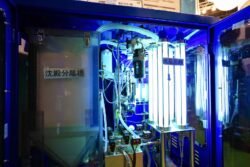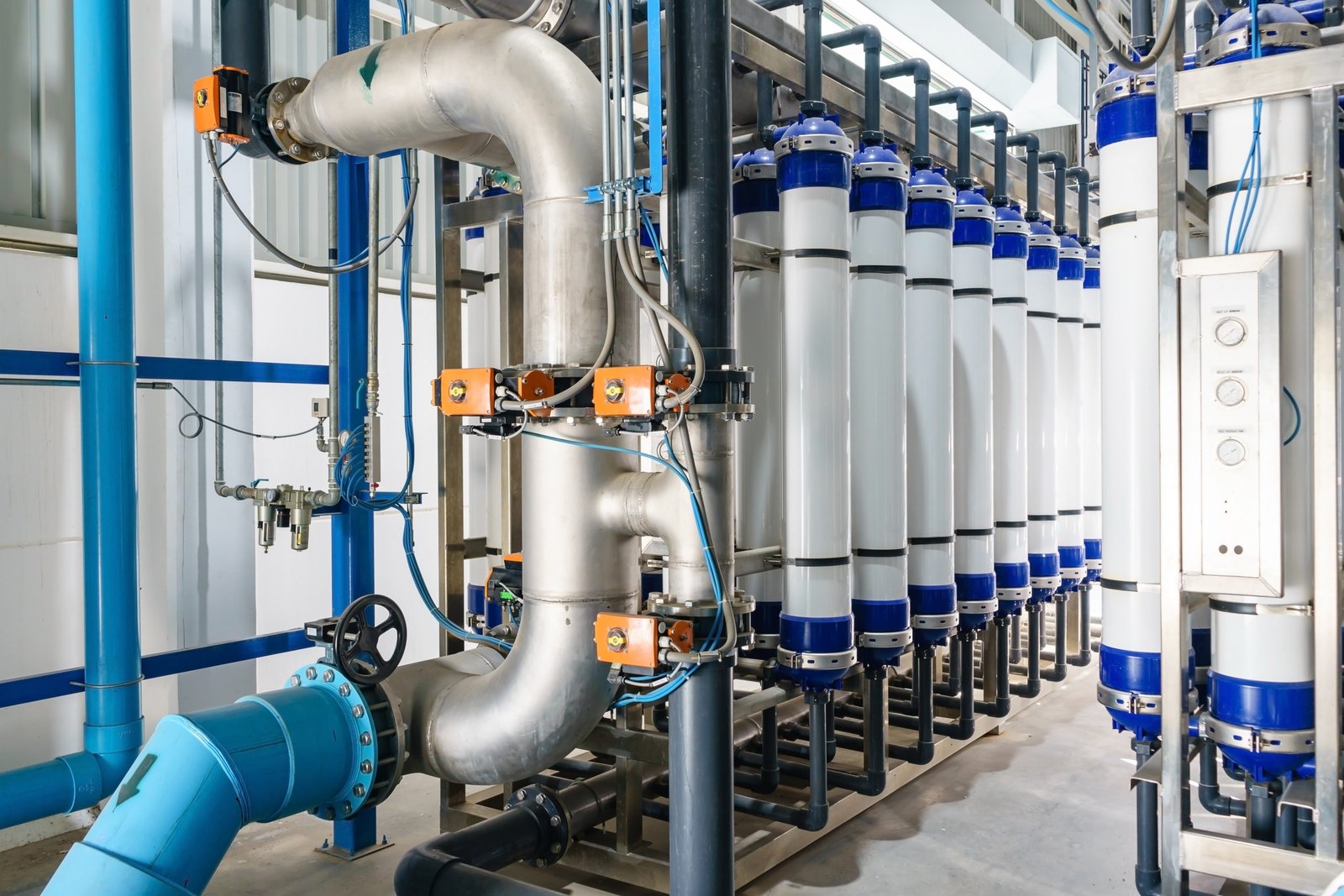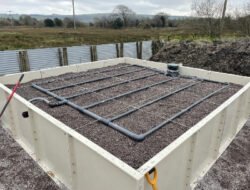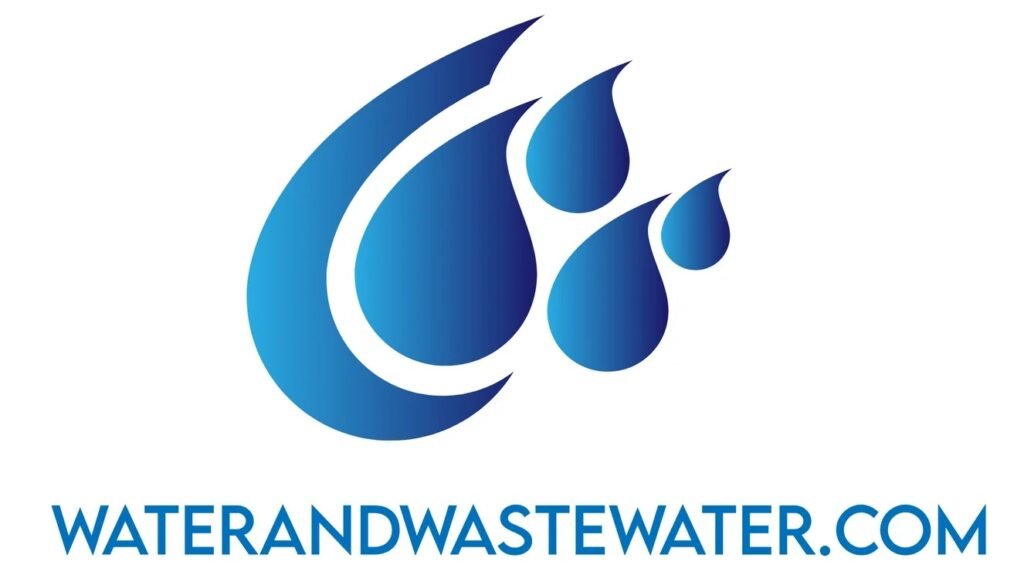
Bergen County Utilities Authority Little Ferry Water Pollution Control Facility – Combined Sewer Overflow/Sewage Treatment Plant
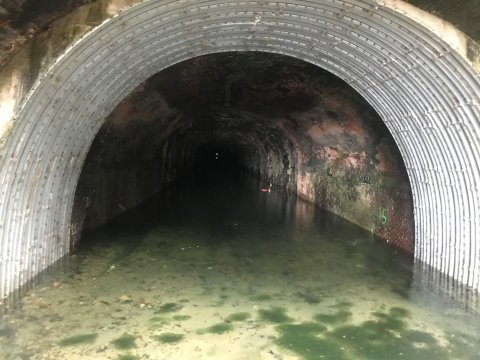
Bergen County Utilities Authority Little Ferry Water Pollution Control Facility: A Pillar of Environmental Stewardship
Introduction
In northern New Jersey’s bustling Bergen County lies an industrial yet crucially green establishment – the Bergen County Utilities Authority (BCUA) Little Ferry Water Pollution Control Facility (WPCF). Known for its robust role in wastewater management and its proactive approach to community involvement, this facility is a technological marvel and a significant guardian of regional water quality. Moreover, amidst the intricacies of combined sewer overflow (CSO) and modern sewage treatment plants, the Little Ferry WPCF stands as a beacon of sustainable development and environmental guardianship.
Population Served
The Little Ferry WPCF serves a substantial population that underlines its importance in the regional infrastructure. The facility caters to over 47 municipalities within Bergen County, whose collective population amounts to approximately 800,000 residents. The demographic complexity within these jurisdictions ranges from densely populated urban centers to suburban and semi-rural locales, thereby posing a comprehensive challenge in public utility management.
Wastewater Volume and Treatment Capacity
The facility’s operational statistics are nothing short of impressive. The Little Ferry WPCF is configured to handle an average of 75 million gallons of wastewater per day. However, during peak flow conditions, especially during storm events, the plant is capable of treating up to 300 million gallons per day (MGD). This far-sighted engineering ensures that flooding and overflow can be managed without compromising the water quality of the adjacent Hackensack River, into which treated effluent is discharged.
Combined Sewer Overflow: A Complex Challenge
Combined sewer systems (CSS) represent a critical aspect of the aging infrastructure in many older cities. Here, stormwater and sanitary waste share the same conveyance system. During heavy rainfall, the excess volume can overwhelm the capacity of the sewer system and treatment facilities, leading to CSO events where untreated or partially treated wastewater is discharged directly into water bodies. This is a significant environmental concern, with potential adverse effects on water quality and public health.
To alleviate this, the BCUA has invested heavily in infrastructure improvements and advanced treatment technologies. Initiatives include the construction of additional storage tanks and the implementation of high-rate treatment processes that can rapidly treat increased volumes of wastewater during storm events. Moreover, the authority is constantly exploring innovative solutions like green infrastructure to address the inflow and infiltration (I&I) challenges.
Recent Local News and Developments
While the BCUA Little Ferry WPCF is rooted in tradition, it continually evolves to keep pace with emerging environmental standards and technological advancements. Here are some of the notable news and developments:
-
- Green Energy Initiatives: Recently, the BCUA has commissioned a co-generation system that allows the facility to generate its electricity by utilizing biogas produced during the anaerobic digestion process. This helps in reducing the carbon footprint and operational costs of the facility.
- Green Energy Initiatives: Recently, the BCUA has commissioned a co-generation system that allows the facility to generate its electricity by utilizing biogas produced during the anaerobic digestion process. This helps in reducing the carbon footprint and operational costs of the facility.
-
- Pharmaceutical Disposal Program: In light of increasing concerns about pharmaceuticals in waterways, the BCUA has launched a community prescription medication disposal program. This initiative aims to reduce the introduction of pharmaceutical compounds into the sewer system, which can be challenging to remove through conventional treatment processes.
- Pharmaceutical Disposal Program: In light of increasing concerns about pharmaceuticals in waterways, the BCUA has launched a community prescription medication disposal program. This initiative aims to reduce the introduction of pharmaceutical compounds into the sewer system, which can be challenging to remove through conventional treatment processes.
-
- Advanced Nutrient Removal Technology: In coordination with state and federal environmental agencies, the BCUA has implemented enhanced nutrient removal technologies. These systems target nitrogen and phosphorus reductions, which are critical to preventing eutrophication in local water bodies.
Key Projects
The BCUA is involved in various strategic projects that enhance its operational efficiency and environmental impact:
-
- CSO Long-Term Control Plan: This legislative-mandated endeavor entails a series of infrastructure upgrades aimed at significantly reducing CSO events. The multi-phase project includes the construction of large underground retention basins, real-time control systems, and the separation of stormwater and sanitary systems in critical areas.
- CSO Long-Term Control Plan: This legislative-mandated endeavor entails a series of infrastructure upgrades aimed at significantly reducing CSO events. The multi-phase project includes the construction of large underground retention basins, real-time control systems, and the separation of stormwater and sanitary systems in critical areas.
-
- Secondary Treatment System Overhaul: Over recent years, extensive investments have been made to upgrade the secondary treatment processes. The introduction of technologies such as membrane bioreactors (MBR) and integrated fixed-film activated sludge (IFAS) has drastically improved the effluent quality, meeting and exceeding regulatory standards.
- Secondary Treatment System Overhaul: Over recent years, extensive investments have been made to upgrade the secondary treatment processes. The introduction of technologies such as membrane bioreactors (MBR) and integrated fixed-film activated sludge (IFAS) has drastically improved the effluent quality, meeting and exceeding regulatory standards.
-
- Sludge Handling Improvements: Efficient sludge management is integral to effective wastewater treatment. The facility has recently upgraded its sludge dewatering and drying systems, which has resulted in reduced landfill contributions and the potential for beneficial reuse in agricultural applications.
Community Engagement
The BCUA Little Ferry WPCF has always emphasized community interaction and education as pillars of its operational philosophy. Core efforts include:
-
- Educational Programs: The facility regularly hosts school tours, workshops, and seminars focused on environmental science and wastewater management. These initiatives aim to foster environmental stewardship within the younger generations.
- Educational Programs: The facility regularly hosts school tours, workshops, and seminars focused on environmental science and wastewater management. These initiatives aim to foster environmental stewardship within the younger generations.
-
- Public Advisory Committees: The BCUA has established community advisory panels that include local stakeholders. These panels provide a platform for discussing ongoing projects, addressing community concerns, and fostering a transparent relationship between the utility and the public.
- Public Advisory Committees: The BCUA has established community advisory panels that include local stakeholders. These panels provide a platform for discussing ongoing projects, addressing community concerns, and fostering a transparent relationship between the utility and the public.
-
- Volunteer Clean-Up Events: Engaging the community hands-on, the BCUA organizes regular river clean-up programs that encourage resident participation. These events highlight the importance of preserving local waterways and offer practical ways for residents to get involved.
- Volunteer Clean-Up Events: Engaging the community hands-on, the BCUA organizes regular river clean-up programs that encourage resident participation. These events highlight the importance of preserving local waterways and offer practical ways for residents to get involved.
-
- Public Awareness Campaigns: Through digital and traditional media, the BCUA conducts awareness campaigns about proper waste disposal, the impacts of CSOs, and water conservation. These efforts are instrumental in aligning public behavior with environmental sustainability goals.
Conclusion
The Bergen County Utilities Authority’s Little Ferry Water Pollution Control Facility exemplifies the intersection of advanced technology, forward-thinking policy, and community engagement. As the region continues to grow, the plant’s ability to adapt and innovate ensures that it remains steadfast in its mission of protecting water quality and public health. Through ongoing investments in infrastructure, technology, and community programs, the BCUA continues to earn its reputation as a guardian of the environment, setting benchmarks for other regions to aspire to.
As we look to the future, continuous public support, sustained funding, and a commitment to sustainability will be crucial for the ongoing success of the Little Ferry WPCF. This collaboration between utility authorities, policymakers, and the community at large will ensure that Bergen County’s waterways remain pristine for generations to come.
